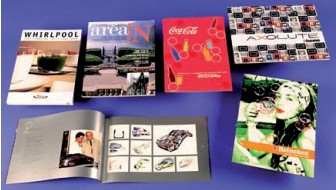Varnish type overview A varnish for a variety of purposes-this almost entangles the many offerings of manufacturers. At first glance, it seems that printers will be dazzled by a wealth of choices, but a closer inspection, through the technology used in the varnish, the system used to harden the varnish, and the special requirements for the final product, will This choice is greatly reduced. The interaction between the features and functions listed on the label will certainly not only result in the desired results when formulating them, so printers must always beware of unexpected accidents that may affect compatibility and ease of finishing "side effect". The composition of various varnishes and their derived physical (dry) / chemical (curing, polymerization) hardening principles are different. Water-based varnishes and UV-cured varnishes are the most commonly used, while solvent-based varnishes (these are two-component varnishes) are only used in the production of flexographic and gravure printing. In recent years, printed varnishes (now the non-yellowing models of such varnishes are sometimes available) have undergone a renaissance, especially with UV or water-based gloss varnishes. Waterborne varnishes are proud to have the widest range of applications. However, for traditional high-gloss finishes, UV varnish is the first choice. Water-based varnish (aqueous varnish) Holger Müller, the production manager of the German packaging printer Aug. Heinrigs, Aachen, is showing the printed sheet completed by KBA 74 Karat, which shows some of the effects that may be obtained with glossy and matte water-based glazes. These varnishes are mainly used to protect substrates and to complete finishing operations or cover installation without delay. The printed sheet also shows that it can be partially polished on the waterless offset printing machine that forms an image on the machine The water-based varnish forms a layer of oil film condensed on the substrate in a physical manner through the evaporation of the carrier (water) or the precipitation of particles absorbed and dispersed (suspended) in water. The particles in the varnish are mainly acrylate polymers, which are expected to harden by polymerization as in the manufacturing process. Hydrosols (resins and other substances dissolved in water) promote the formation of films, which bind polymer particles together and enhance their ability to adhere to substrates. Other substances contained in the glazing oil improve its processing performance: antifoaming agent prevents foaming on the anilox roller of the oil scraping system, and the surfactant helps reduce the surface tension of the image composed of the substrate or ink Appropriate wetting of the surface, or in the presence of primer, the water-based varnish can be properly wetted by the UV varnish behind. If the delivery device is shorter, the retarder can improve the spread of the varnish. Other additives act to enhance the desired characteristics. They are usually dispersed wax particles (to resist friction, scratches and stickiness, and enhance gloss, matte effect, sealing performance, UV coating performance, etc.), of course, they can also have special effects (pearl gloss, metal) In the form of pigments and aromatic substances. The early water-based varnish was applied through a water bucket, and its quality was relatively poor. At present, there are still some printing machines equipped with two-roll glazing units. However, customers of KBA turned to the machine for anilox roller glazing unit very early, this device can get the best glazing quality, and support a wider range of applications. Unfortunately, the benefits of the wide application range of water-based varnishes are offset by the high-energy drying methods required. This is because, unlike radiation-cured varnishes and oil-based varnishes, aqueous varnishes will never contain close to 100% solid matter. In practice, this means that not all substances in the aqueous varnish remain on the substrate. As we have mentioned above, the water applied together with the other components of the varnish must be evaporated, which requires very high energy consumption. In addition, a steam extractor must be installed next to the infrared radiation device, and possibly a hot air knife. If the hot air is dried too quickly, it will cause fine cracks (cracking) on ​​the surface of the varnish, especially where there is a large amount of ink deposition. The double-tube carbon radiator has a higher efficiency level and is integrated in the KBA VariDry dryer used in the Rapida press series. High-frequency drying is about to enter the beta test phase at a well-known radiator manufacturer: its wavelength only stimulates water molecules and causes their evaporation, while the polymer molecules remain unaffected, that is, the material and The environment around it is not heated. The disadvantage is that water-based varnish must be used, and it is contained in a small amount of resin-based solvents that must be vaporized. In addition, this method is not suitable for metal foil laminate substrates or substrates with metal strips or pigments. Shantou Yicheng Trading Co.,Ltd , https://www.shantouyicheng.com

